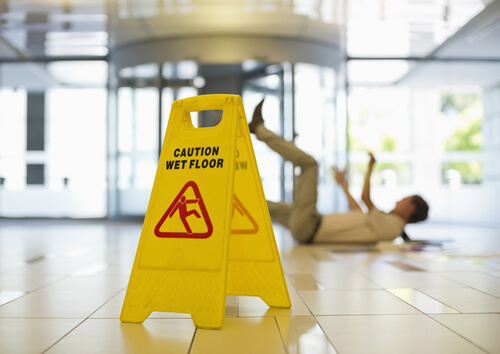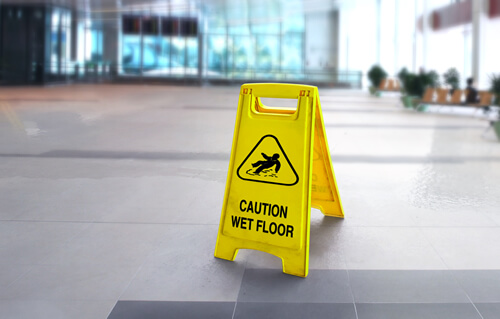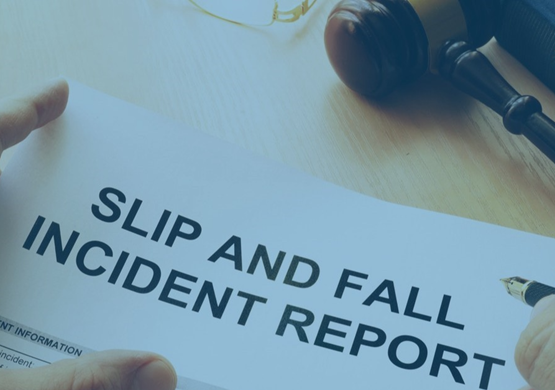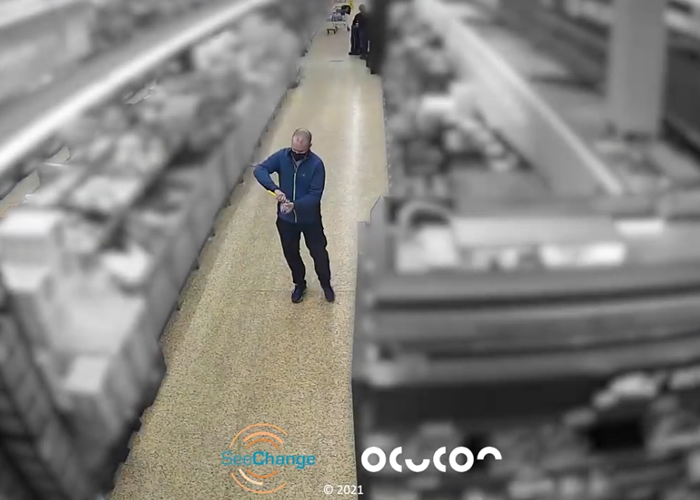Slips, Trips and Falls in the Retail Sector: Reducing the Risk
Slips, Trips and Falls – Active Loss Prevention
Did you know that nearly 50% of all claims made against retailers are slips, trips and falls cases? (source). It’s also important to be aware that slips, trips and falls are the second highest single cause of workplace injuries (source).
If a slip, trip and fall accident occurs in your place of business, it can be difficult to defend your operations if due diligence has not been carried out in providing a safe environment for customers and employees. In order to effectively protect employees and customers, slip and fall prevention must be viewed holistically and a full risk assessment should be carried out.
(Blog modified May 2021)
Compiling such a Risk Assessment should follow 6 steps;
1. Identify Slip, Trip and Fall Risks
Begin by analysing previous slips to identify any particular issues. This involves identifying areas where slips, trips, and falls have happened and where they are more likely to happen. Consult with staff to find out if they are aware of any problems or if they have slipped in the past.
Then, identify all sources of liquid, for example; equipment using water/ liquid, cleaning store, toilets, loose fruit and vegetables, flowers and plants, etc. It’s important to know that viscous liquid spills can be highly hazardous. This is because as the viscosity of a likely spill increases, the surface roughness required increases.
2. Prevent Slips, Trips and Falls

A number of steps should be taken to prevent slips, trips, and falls caused by spills. The following should all be considered as part of your risk management strategy;
- Use floor mats near liquid containers
- Provide containers for customers to carry their goods
- Maintain equipment and pipework in good working order with proper seals and valves
- Dispose of packing material and other wrappings carefully. Merchandising material & paper/ magazine inserts can be hazardous
- Display any store liquids so it’s not likely to spill onto walkways. Don’t put containers of liquid too close to the front of shelves
- Invest in a software tool which alerts management as soon as hazardous material spills/ appears on the floor. Alerts should be set up to automatically send a notification in such an event.
3. Contain Liquid Spills - Minimise Slip, Trip and Fall Risks
In 2012, 35% of workplace visits by the Health and Safety Authority found that the employer didn’t have a procedure in place for the use of floor mats to reduce slip risks. It’s important that measures are taken to contain spills – these include;
- Use floor mats where appropriate
- Where spills are likely, provide tools designed to contain spills
- Provide drains in areas where spills are a frequent occurrence
- Hang mops and other wet equipment over buckets
- Exercise particular caution at entrances and exits
4. Detect Spill Hazards - Minimise Risks of Slips, Trips and Falls
Your business should be monitoring spill detection on a frequent, regular, and planned basis. Ocucon in partnership with SeeChange have developed Spill Detect software to cover-off related hazards, delivering low cost automatic, proactive, pre-emptive spill detection.
Alternatively, businesses may rely upon a manual checklist to ensure monitoring of spills is carried out, although they remain exposed to time delays and resulting liability should they not be reported in time. Keep in mind that often, measures taken to bring awareness to a spill are generally not reliable. This is because the visibility of a fluid is dependent on numerous factors.
Actions which may increase the visibility of a fluid spill on a floor include:
- Increase ambient lighting, especially around entrances and exits
- Cordon off or place markers at the edges of a wet area
- Ensure colour contrast between flooring and likely fluid contaminants, such as cleaning products
- Use AI technology to identify hazardous spills as soon as they occur
5. Cordon Slip, Trip and Fall Hazards

Ensure that spills are immediately removed using absorbent material.
In some instances, it may not be possible to remove a spill straight away, for example, large spills, spills of viscous or hazardous liquids. In such circumstances, it may be necessary to cordon off the spill using signs or markers.
6. Remove Spills
Spills should be dealt with immediately. To be proactive, provide cleaning materials to remove spills at identified high risk areas. Ensure spills are thoroughly cleaned and dried. Often, a superficial effort made to clean or dry the surface can cause a greater risk than that of the original spill.
Emerging technology that detects hazards such as liquid spills as soon as they occur can significantly reduce risk. It is predicted that this innovative technology will be commercially available this year and will greatly improve retail operations.
Loss Prevention Technology for Slips, Trips and Falls
Behavioural science has shown that there is a natural human tendency to take shortcuts, particularly when operating under pressure. This tendency is hardwired into cognition (heuristic biases), remains extremely difficult to unwind and generates a poor perception of risk. Therefore, even if organisations follow the above 6 step process, they still remain exposed to the risk of human behaviour, a view supported by research from the Health & Safety Executive, which highlights the contributory role that it plays in the majority of slip, trip and fall incidents. They even identified 15 individual factors, which were predominantly driven by a poor perception of risk, more specifically:
- Lack of understanding of requirements of health and safety legislation to identify and control slip, trip and fall risks
- Poor perception of risk
- Failure to identify slip, trip and fall risks
- Failure of employees and members of the public to report spillages or slip, trip and fall risks
- Inadequate or lack of reaction to reported problems
- Lack of ownership of health and safety responsibilities
- Lack of understanding of health and safety responsibilities
- Lack of awareness of slip, trip and fall risks
- Poor understanding of the importance of implementing existing health and safety measures to control slip, trip and fall risks
- Failure to provide staff with health and safety training, including slip, trip and fall risks
- Failure to monitor and investigate effectiveness of control measures
- Lack of staff supervision
- Lack of enforcement of health and safety rules
Without some form of automation, or slip, trip and fall prevention software, organisations will as a result continue to fall foul of human behaviour and remain exposed to personal liability cases. It is therefore extremely important for loss prevention specialists to keep up to date with emerging technology and explore how they may remove humans from the reporting loop, through the implementation of new and innovate loss prevention software. This ultimately holds the key to driving down related risks and to mitigating related costs.
With the introduction of Spill Detect Software, a brand new and highly innovative technology that uses artificial intelligence to automatically recognise and report liquid spills over existing CCTV networks, organisations can now take pre-emptive action to reduce liability and negate personal injury claims. If you are a loss prevention specialist or a site manager looking to reduce the risk of slip, trip and fall incidents you can now improve your bottom line by using software to detect and report hazards such as liquid spills as soon as they occur, which significantly reduces your risk and liability of slips, trips and falls.



